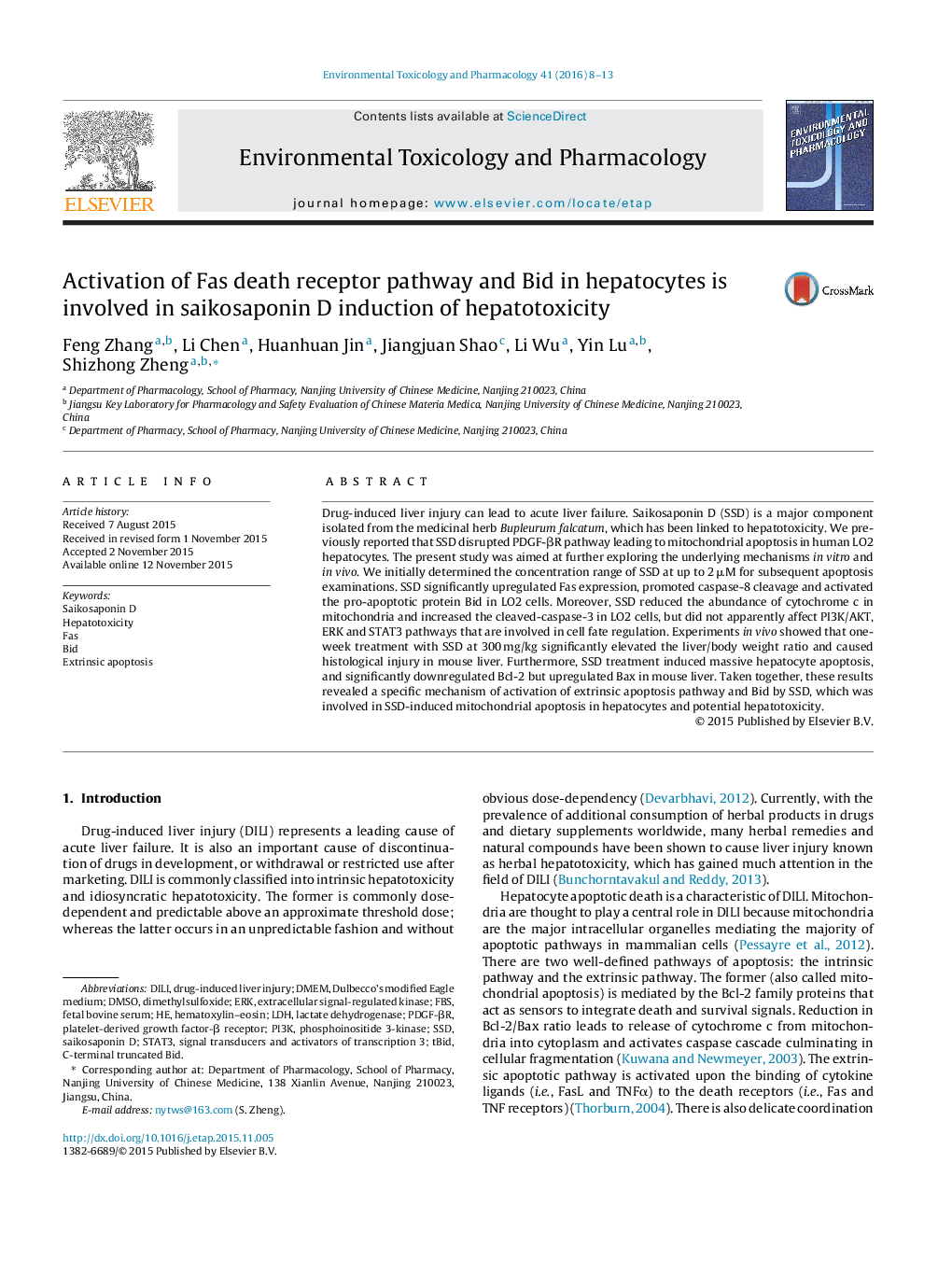| Article ID | Journal | Published Year | Pages | File Type |
|---|---|---|---|---|
| 2582857 | Environmental Toxicology and Pharmacology | 2016 | 6 Pages |
•SSD induced mitochondrial apoptosis in hepatocytes.•SSD activates Fas-mediated death receptor signaling in hepatocytes.•SSD activates Bid and stimulates cytochrome c release in hepatocytes.•SSD does not affect some pathways regulating cell fate in hepatocytes.•SSD induces hepatocyte apoptotic death in mice.
Drug-induced liver injury can lead to acute liver failure. Saikosaponin D (SSD) is a major component isolated from the medicinal herb Bupleurum falcatum, which has been linked to hepatotoxicity. We previously reported that SSD disrupted PDGF-βR pathway leading to mitochondrial apoptosis in human LO2 hepatocytes. The present study was aimed at further exploring the underlying mechanisms in vitro and in vivo. We initially determined the concentration range of SSD at up to 2 μM for subsequent apoptosis examinations. SSD significantly upregulated Fas expression, promoted caspase-8 cleavage and activated the pro-apoptotic protein Bid in LO2 cells. Moreover, SSD reduced the abundance of cytochrome c in mitochondria and increased the cleaved-caspase-3 in LO2 cells, but did not apparently affect PI3K/AKT, ERK and STAT3 pathways that are involved in cell fate regulation. Experiments in vivo showed that one-week treatment with SSD at 300 mg/kg significantly elevated the liver/body weight ratio and caused histological injury in mouse liver. Furthermore, SSD treatment induced massive hepatocyte apoptosis, and significantly downregulated Bcl-2 but upregulated Bax in mouse liver. Taken together, these results revealed a specific mechanism of activation of extrinsic apoptosis pathway and Bid by SSD, which was involved in SSD-induced mitochondrial apoptosis in hepatocytes and potential hepatotoxicity.
